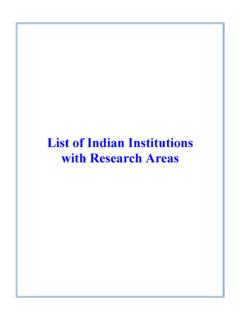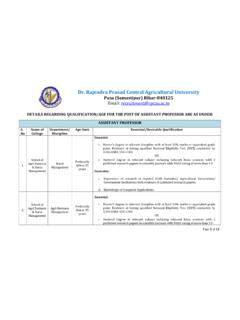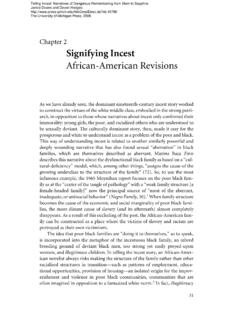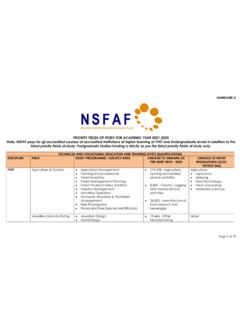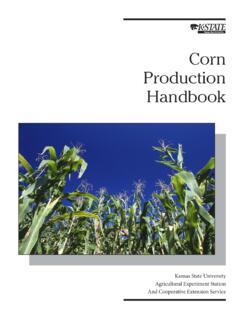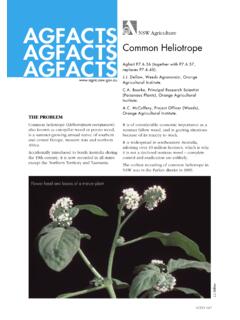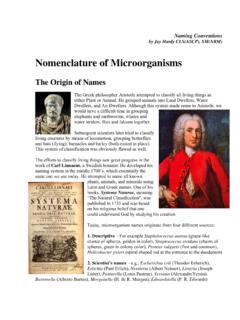Transcription of EVALUATION AND TREATMENT OF COCCYX PAIN
1 Dr Stephen Sandler PhD DOEVALUATION AND TREATMENT OF COCCYX PAINI ntroduction COCCYX pain aka coccydynia or coccygodynia is a common problem, however articles stating the prevalence of the condition have not been found despite extensive searching. In my practice I have seen 50 -60 cases each year over the last three years often referred in by other osteopaths who feel that their training in this area was weak and thus they refer toa specialist in the area. It has been estimated at 1% of any population report back pain part of which is COCCYX pain This type of pain occurs five times more frequently in women than in men Coccydynia does not target a certain type of ethnicity or raceMuscle and ligament attachmentsThe Anatomy Muscle and ligament attachmentsThe COCCYX is part of the weight-bearing tripod structure which act as a support for athesacrococcygeal symphysis when a person sits leaning forward, theischial tuberositiesandinferior rami of the ischiumtake most of the weight, but as the sitting person leans backward, more weight istransferred to the COCCYX .
2 This can be a differential diagnostic question when taking a case history. However pain can occur on rising from sitting as the centre of gravity is transferred posteriorly and weight comes again to the flexed traumatised COCCYX . The anterior side of the COCCYX serves for the attachment of a group of muscles important for many functions of thepelvic floor( , continence): thelevator ani muscle, which include coccygeus,iliococcygeus, andpubococcygeus. Through the anococcygeal raphe, the COCCYX supports the position of theanus. Attached to the posterior side isthe gluteus maximuswhich extends coccygeuscoccygeusIlio coccygeusThe Pelvic floor and the COCCYX seen from behindCoccygeus( ischio coccygeus)Iliococcygeus ( as part of levator ani)Extensor Coccygeus the only picture to be found Ligaments of the coccyxMany ligamentsattach to the COCCYX .
3 Theanteriorandposteriorsacrococcygeal ligamentsare the continuations of theanteriorandposterior longitudinal ligamentsthat stretch along the entire sacrococcygeal ligamentscomplete theforaminafor thelast sacral fibers of thesacrospinousandsacrotuberous ligaments(arising from thespine of the ischiumand theischial tuberosityrespectively) also attach to the extension of thepia mater, thefilum terminale, extends from the apex of theconus, and inserts on the coccyxDifferential Diagnosis of Coccydnia The most important differential diagnostic tool is still the history. The most important consideration in the history has to be the is it coccygeal pain or not? The most important question has to be trauma or notHistory taking Coccygeal trauma The commonest trauma is falling on the buttocks Falls on ice Skiing Falls from horse Also prolonged bike rides especially if it mountain biking, Or speed bumps and bad road surfaces !
4 ! We are looking for a fracture and if in doubt send the patient for a lateral coccygeal X Ray and if possible a dynamic view standingLateral radiograph (a) and sagittal CT reconstruction (b) demonstrating a fractured COCCYX in a patient who was diagnosed with coccydynia following a ground-level fall 6months earlierHistory Taking Weight bearing The differential diagnosis is disc or COCCYX Especially hard surfaces Getting up from a soft chair can indicate either disc disease orcoccygeal pain Is it an SIJ problem rather than a COCCYX especially post partum Do not forget referred pain from the facet joints in the LS segment Patients sit on one buttock to avoid the painful coccyxHistory TakingCondition and signs / symptomsMedical testing Lumbar spondylosis/disc herniation Pain is relieved by sitting. Pain and/or tenderness may involve the sacrum or lumbar spine, without specific tenderness of the COCCYX .
5 No pain or tenderness on palpation of COCCYX or rectal examination. Injection of corticosteroid around the dorsal surface of the COCCYX does not relieve pain, indicating pain is referred. MRI of lumbosacral spine may reveal the site of degenerative disc disease or disc TakingConditions signs and symptomsMedical testing Levator ani syndrome Also known as puborectal syndrome, levator spasm, or pelvic floor myalgia. This category may include some cases of idiopathic coccygodynia. Dull ache or pressure sensation in the rectum, exacerbated by prolonged sitting or supine position, which may last hours to days. Tenderness of puborectalis muscle on rectal examination. Although some studies have shown increased anal canal pressure and correlated pain relief with a decrease in pressure, other authors have discouraged its routine use, citing unreliability in its diagnostic and predictive TakingCondition and signs / symptomsMedical testing Alcock's canal syndrome Also known as pudendal canal syndrome or pudendal nerve entrapment.
6 Unilateral or bilateral burning, prickling, stabbing, or numbness in the perineum, external genitalia, or scrotum. Pain is worse with sitting and there is a sense of a foreign object in the urethra, rectum, or vagina. Diagnosis is essentially clinical. MRI reveals normal anatomy, or intercurrent disease unrelated to the diagnosis, or occasionally may reveal a nerve sheath tumour. Pudendal nerve motor latency studies (nerve conduction studies) are usually normal, as sensory fibres are affected preferentially. Diagnostic nerve block, consisting of anaesthetic infiltration within the pudendal canal, results in pain relief for the duration of anaesthesia, but may be technique TakingCondition signs or symptomsMedical testing Tarlov cyst Rare cause of coccygodynia. Sacral perineural cysts may rarely present with coccygeal pain.
7 May be accompanied by urinary disturbance and pain in the groin region. MRI of the sacrum reveals nerve root cysts of CSF density, bright on T2 weighted sequences. CT may reveal enlargement of the sacral foramina or thinning of the sacral lamina around the cyst. May or may not fill on contrast myelography. No relief of pain on coccygeal injection with corticosteroidPelvic Pain or Coccygeal Pain? Is there bleeding? The presence of bleeding with pain suggests an anal fissure, hemorrhoids, carcinoma, rectal prolapse, and intussusception. Pelvic Pain or Coccygeal Pain? Is there a mass? The presence of rectal pain along with a mass would suggest internal and external hemorrhoids, rectal carcinoma, and perirectal or ischiorectal abscesses. Pelvic Pain or Coccygeal Pain? However, in females, masses in the cul-de-sac ( pouch of Douglas), such as an acute salpingitis, ectopic pregnancy, or endometriosis, will cause rectal pain.
8 If in doubt refer to gynaecologist for expert PV assessmentPelvic Pain or Coccygeal Pain? In males, prostatic abscess, foreign bodies, and seminal vesiculitis may cause rectal pain. Pelvic Pain or Coccygeal Pain? Is there a purulent discharge? Fistula in ano, perirectal abscess, ischiorectal abscess, and submucous abscess may cause a purulent FOR EXAMINATION AND TREATMENT PER RECTUM Ethical Considerations You must read the General Osteopathic Council document Fitness to Practice . This is the minimum standard that the register demands and is the document by which you will be prosecuted if you fall foul of the regulations. 5 minutes explanation beforehand is better than time spent in apology afterwardsEthical Considerations There is no such thing as implied consent, you either ask and receive positive consent or you do not proceed Indications for PR investigation and treatments Cases where there has been direct trauma to the area Cases where you suspect trauma post partum after a long or difficult labour Cases of prostatic disease in elderly men Cases where there has been surgery to the pelvic floor in eithersex where there has been scarring and thus a drawing up of the pelvic floor that can flex the sacro coccygeal junctionContra indications to PR investigation and treatments Lack of express permission Has the patient understood what you want to do?
9 Are they compos mentis? Is it a child ? If so do you have the parent or guardian s permission? Large piles or anal fissures Ano rectal carcinoma Excess fear or pain in anticipation of the procedureExamination Standing Exam Static Active movements Observation and palpation both actively and passively standing to exclude other structures Weight bearing tests +ve /-ve ?? Is this referred pain or real coccydnia?Examination Sitting tests Slump test Direct test to the COCCYX . This is a sensitive area and you MUST get permission before you start. You MUST use a plastic skeleton or at least a diagram to explain what you are going to do before you do it. The only when you have heard the positive permission given can you carry on. If in doubt DO NOT CONTINUE Examination Supine Examination Hip rotation for pelvic floor tone SI joint testing Ischial Tuberosity muscle tone testing Get patient to actively contract the tone of the pelvic floor and assessExamination Prone examination Ask permission to reveal the buttock cleft Palpate PSIS PIIS Identify the SC junction and palpate from above and laterally before Does the history reveal the likelihood of a coccygeal problem oris this an undiagnosed LS SIJ or Hip problem or even an unrelated pathology?
10 2. Does the standing exam confirm or deny the suspicions raised by the history?3. Does the supine exam show hip disease or SIJ pain . What doesthe pelvic floor exam reveal when you compare one side to the other?4. Does the prone exam suggest pain coming directly from the COCCYX and is there increased muscle tone in the muscles relating to the COCCYX on one side or the other?5. Does the sitting exam give you the final proof you need?The Technique The technique of choice is going to be a Functional Technique done with the patient in the side lying position. Hypothesis Test Prove the hypothesis Treat RetestThe Test Ask the patient to sit on the plinth with their back towards you You should stand on the non painful side, if the pain is centralthen you should stand on the side of the non dominant buttock With one hand around their shoulders side bend the patient towards you With the index finger of the other hand at the scacro-coccygeal junction move the patient into full flexion and then back into extension.

